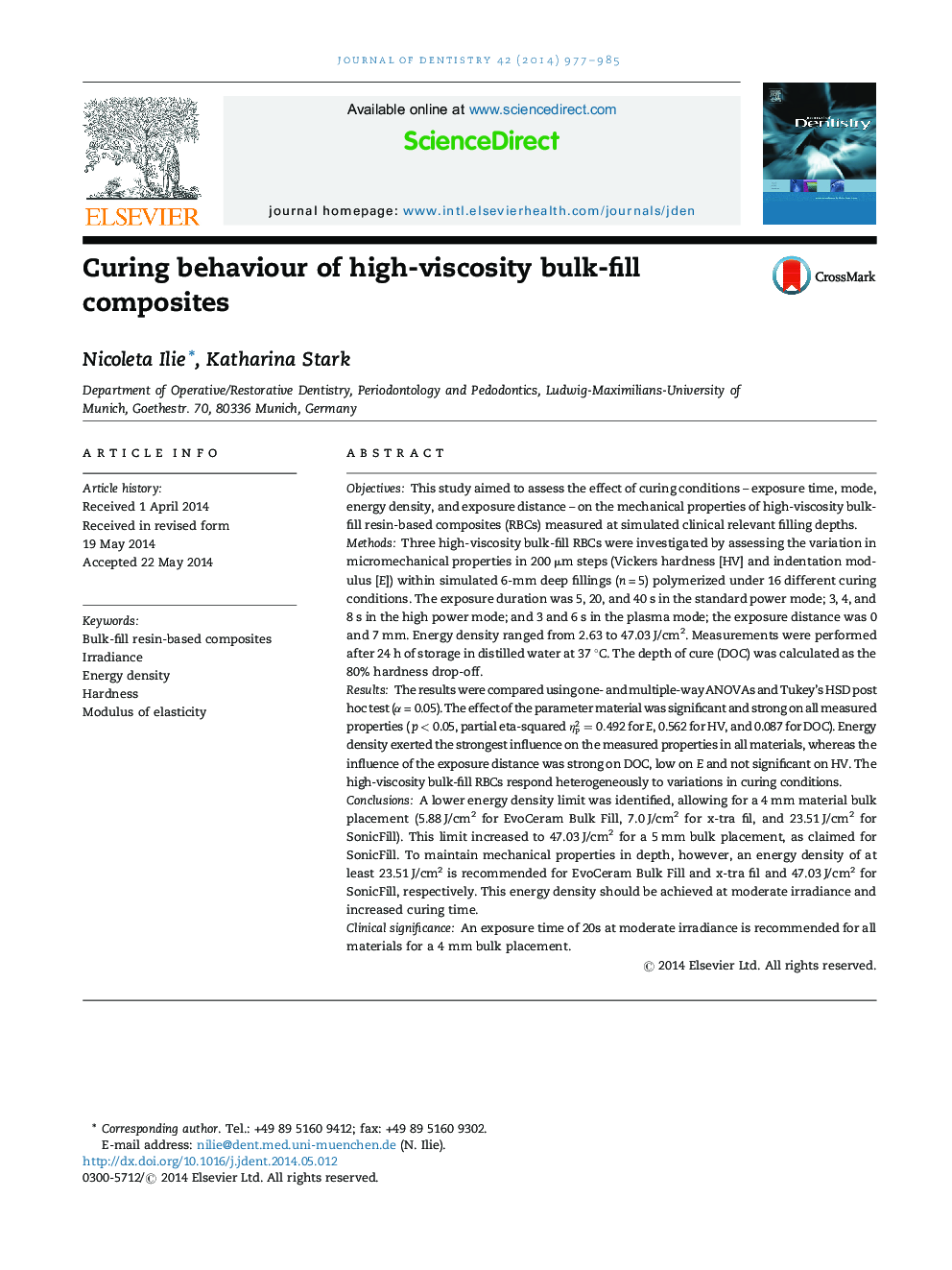| کد مقاله | کد نشریه | سال انتشار | مقاله انگلیسی | نسخه تمام متن |
|---|---|---|---|---|
| 6053742 | 1197145 | 2014 | 9 صفحه PDF | دانلود رایگان |
ObjectivesThis study aimed to assess the effect of curing conditions - exposure time, mode, energy density, and exposure distance - on the mechanical properties of high-viscosity bulk-fill resin-based composites (RBCs) measured at simulated clinical relevant filling depths.MethodsThree high-viscosity bulk-fill RBCs were investigated by assessing the variation in micromechanical properties in 200 μm steps (Vickers hardness [HV] and indentation modulus [E]) within simulated 6-mm deep fillings (n = 5) polymerized under 16 different curing conditions. The exposure duration was 5, 20, and 40 s in the standard power mode; 3, 4, and 8 s in the high power mode; and 3 and 6 s in the plasma mode; the exposure distance was 0 and 7 mm. Energy density ranged from 2.63 to 47.03 J/cm2. Measurements were performed after 24 h of storage in distilled water at 37 °C. The depth of cure (DOC) was calculated as the 80% hardness drop-off.ResultsThe results were compared using one- and multiple-way ANOVAs and Tukey's HSD post hoc test (α = 0.05). The effect of the parameter material was significant and strong on all measured properties (p < 0.05, partial eta-squared ηP2=0.492 for E, 0.562 for HV, and 0.087 for DOC). Energy density exerted the strongest influence on the measured properties in all materials, whereas the influence of the exposure distance was strong on DOC, low on E and not significant on HV. The high-viscosity bulk-fill RBCs respond heterogeneously to variations in curing conditions.ConclusionsA lower energy density limit was identified, allowing for a 4 mm material bulk placement (5.88 J/cm2 for EvoCeram Bulk Fill, 7.0 J/cm2 for x-tra fil, and 23.51 J/cm2 for SonicFill). This limit increased to 47.03 J/cm2 for a 5 mm bulk placement, as claimed for SonicFill. To maintain mechanical properties in depth, however, an energy density of at least 23.51 J/cm2 is recommended for EvoCeram Bulk Fill and x-tra fil and 47.03 J/cm2 for SonicFill, respectively. This energy density should be achieved at moderate irradiance and increased curing time.Clinical signiï¬canceAn exposure time of 20s at moderate irradiance is recommended for all materials for a 4 mm bulk placement.
Journal: Journal of Dentistry - Volume 42, Issue 8, August 2014, Pages 977-985
